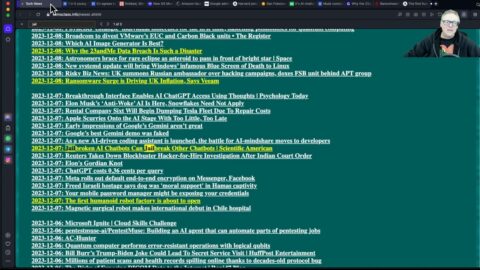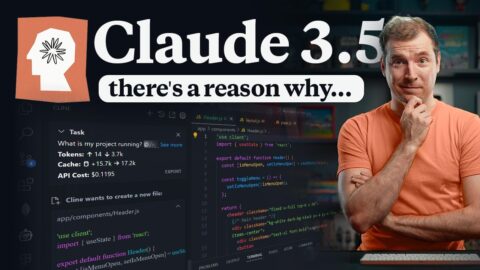Transformers like GPT-3 and ChatGPT are incredibly powerful language processing models. They are able to translate, summarise and compose entire articles from prompts. What is the magic, the 'secret-sauce' that gives them these capabilities.
In this video we discuss the transformer architecture and its key innovation, self-attention, which allows the model to selectively choose which parts of the input to pay attention to.
We explain why we need attention and how transformers use three matrices – Query (Q), Key (K) and Value (V) – to calculate attention scores.
We also explains how back propagation is used to update the weights of these matrices.
Finally, we uses a detective analogy to describe how transformers focus on the most relevant information at each step and better handle input sequences of varying lengths.
Stay tuned for the next video where we take a deeper dive into the transformer architecture.
=========================================================================
Link to introductory series on Neural networks:
Lucidate website:
YouTube:
Link to intro video on 'Backpropagation':
Lucidate website:
YouTube:
'Attention is all you need' paper –
=========================================================================
Transformers are a type of artificial intelligence (AI) used for natural language processing (NLP) tasks, such as translation and summarisation. They were introduced in 2017 by Google researchers, who sought to address the limitations of recurrent neural networks (RNNs), which had traditionally been used for NLP tasks. RNNs had difficulty parallelizing, and tended to suffer from the vanishing/exploding gradient problem, making it difficult to train them with long input sequences.
Transformers address these limitations by using self-attention, a mechanism which allows the model to selectively choose which parts of the input to pay attention to. This makes the model much easier to parallelize and eliminates the vanishing/exploding gradient problem.
Self-attention works by weighting the importance of different parts of the input, allowing the AI to focus on the most relevant information and better handle input sequences of varying lengths. This is accomplished through three matrices: Query (Q), Key (K) and Value (V). The Query matrix can be interpreted as the word for which attention is being calculated, while the Key matrix can be interpreted as the word to which attention is paid. The eigenvalues and eigenvectors of these matrices tend to be similar, and the product of these two matrices gives the attention score.
The Value matrix then rates the relevance of the pairs of words that make up each attention score to the ‘correct’ word that the network is shown during training. The weights of these matrices are “learned” during the training phase of a transformer, such as GPT3 or ChatGPT, through backpropagation, an algorithm used to update the weights to minimize the ‘loss’ between the predicted and actual output.
By using self-attention, transformers are able to focus on the most relevant information, helping them to better handle input sequences of varying lengths. This, along with the semantic and positional encodings, is what enables transformers to deliver their impressive performance. In the next video, we will take a deeper dive into the transformer architecture to look at examples of training and inference of transformer language models.
=====================================================================
#ai #artificialintelligence #deeplearning #chatgpt #gpt3 #neuralnetworks #attention #attentionisallyouneed










